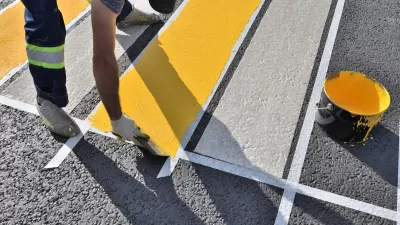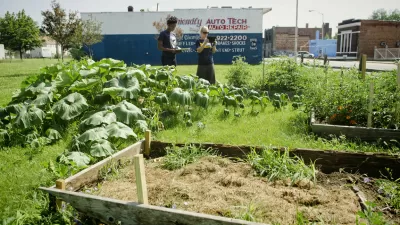Vacant lots in American cities consume vast amounts of land, which many are now recognizing as places of opportunity. Some cities and citizens are transforming once empty urban spaces into vibrant community-fostering places.
Writing in The Nature of Cities, Timon McPhearson describes the state of America's vacant urban lots, and some of the remedies that both local governments and citizens alike are taking to reclaim unused space. "Vacant lands constitute a large fraction of urban land area. In fact, vacant land in U.S. cities of more than 100,000 people varies between 19 and 25% of total land area," he finds.
"I want to offer a challenging perspective," he says," which is that we begin viewing vacant lots as opportunities for land use transformations that can contribute to community development. Vacant land in cities could provide important social and ecological benefits, including habitat for biodiversity, provisioning of ecosystem services, and new green space for residents in underserved neighborhoods of the city."
The author, an Assistant Professor of Urban Ecology at The New School, delves into a few shining examples of places, such as the Baltimore Ecosystem Study and Brooklyn's 596acres.org that are leading the way in transforming vacant spaces into gardens, for both nutritional and social benefits.
"Frankly," argues McPhearson, "vacant land has been overlooked for far too long. If cities were to invest in the social-ecological transformation of vacant land into more useful forms, they would be creating the potential to increase the overall sustainability and resilience of the city."
FULL STORY: Vacant Land in Cities Could Provide Important Social and Ecological Benefits

Alabama: Trump Terminates Settlements for Black Communities Harmed By Raw Sewage
Trump deemed the landmark civil rights agreement “illegal DEI and environmental justice policy.”

Study: Maui’s Plan to Convert Vacation Rentals to Long-Term Housing Could Cause Nearly $1 Billion Economic Loss
The plan would reduce visitor accommodation by 25% resulting in 1,900 jobs lost.

Planetizen Federal Action Tracker
A weekly monitor of how Trump’s orders and actions are impacting planners and planning in America.

Wind Energy on the Rise Despite Federal Policy Reversal
The Trump administration is revoking federal support for renewable energy, but demand for new projects continues unabated.

Passengers Flock to Caltrain After Electrification
The new electric trains are running faster and more reliably, leading to strong ridership growth on the Bay Area rail system.

Texas Churches Rally Behind ‘Yes in God’s Back Yard’ Legislation
Religious leaders want the state to reduce zoning regulations to streamline leasing church-owned land to housing developers.
Urban Design for Planners 1: Software Tools
This six-course series explores essential urban design concepts using open source software and equips planners with the tools they need to participate fully in the urban design process.
Planning for Universal Design
Learn the tools for implementing Universal Design in planning regulations.
Caltrans
Smith Gee Studio
Institute for Housing and Urban Development Studies (IHS)
City of Grandview
Harvard GSD Executive Education
Toledo-Lucas County Plan Commissions
Salt Lake City
NYU Wagner Graduate School of Public Service





























